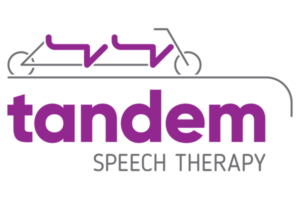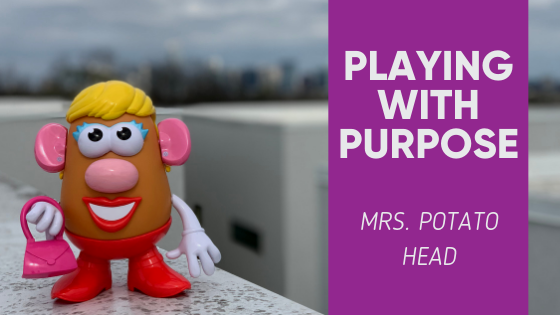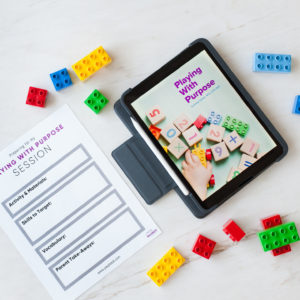I got started with my Playing With Purpose series almost two years ago in June 2017 with Mrs. Potato Head’s companion Mr. Potato Head. The inspiration came from a friend, who I was often giving “advice” to—do X when you’re playing with your son and bubbles, why don’t you try Y the next time you and your son are drawing with sidewalk chalk. And since then, I have written 30 posts in the series and self-published my Playing With Purpose book.
Mrs. Potato Head and her partner provide endless opportunities for language stimulation. She can help teach tons of vocabulary and SO many language concepts. Mrs. Potato Head is great for working on: body part names, clothing item names, color concepts, locations in/out or on/off, asking/answering questions, social skills, collaborative play, following directions, object labeling & identification, expanding sentence length, and action words (verbs) to name a few.
I recommend buying a Mrs. Potato Head set that comes with lots of parts. They are
Top 5 Tips for Playing With Purpose using Mrs. Potato Head
1. Work on labeling and identifying body parts. Body parts is an early developing category group that kids should learn. Start by helping your child identify the parts. Hold up 2 and say, “Get the nose.” If she needs an extra clue point to your nose or her nose, then, once your child can identify the body parts, move on to label (i.e., naming) the pieces. Have her request the items she wants to build her Mrs. Potato Head. You could also work on where items of clothing belong on the body or the noun and function for each body part (i.e., your ears are for hearing).
2. Build speech clarity or work on articulation sounds. If your child is working on speech sounds, then use a carrier phrase to give him lots of practice with that specific sound. For kids working on /s/ you could use the phrase, “I see.” Or for a child working on ‘
3. Teach your child to understand negation while building a Mrs. Potato Head. Negation is the skill used to identify what is ‘not.’ It falls under receptive language or what your child understands. Give your child directions such as “hand me the eyes that are not black” or “get the arm that is not yellow.” If she is having a hard time understanding these commands, then point to the item you want her to pick-up and slowly fade away the visual as the task becomes easier.
4. Engage in pretend play. Pretend play or dramatic play is an essential step in the development of
5. Use Mrs. Potato Head for comparing and contrasting. This is where a set with multiple potatoes comes in handy. Build 2 Mrs. Potato Heads with only one or two different parts, then talk about how they look the same and how they are different. You can turn this into an ‘I Spy’-type game where your child has to find the one difference between the two Mrs. Potato Heads. If you are working with an elementary-aged child, try using a Venn diagram to discuss the ways the 2 Mrs. Potato Heads are the same and different.

As you can see, Mrs. Potato Head is a versatile toy with many opportunities for language growth in play. And remember, toys without batteries are often the best choice. She also makes a great birthday or holiday gift for children ages 2 and up, so your favorite little one can get started Playing With Purpose today.
Want to learn more strategies for using toys like Mrs. Potato Head during play?
Start Playing With Purpose
Learn how to purposefully and intentionally interact with your child during play and help them increase opportunities for speech and language development with our Playing with Purpose book!












